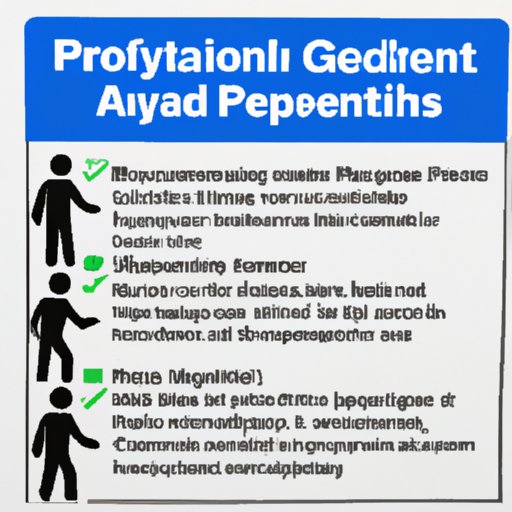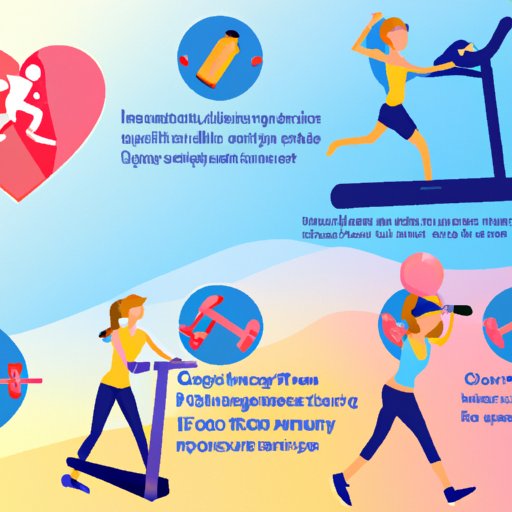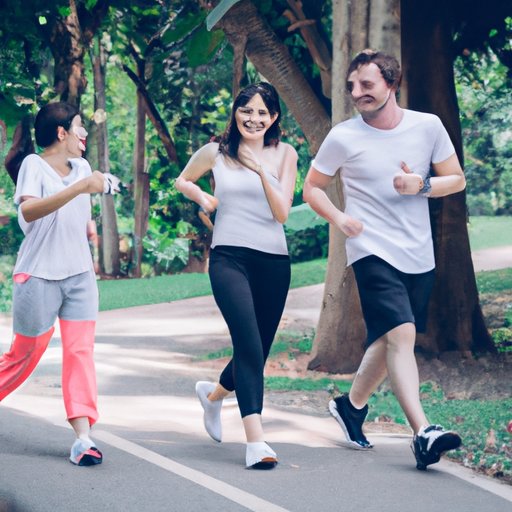Introduction
Physical activity is any bodily movement produced by skeletal muscles that requires energy expenditure. Regular physical activity can help reduce the risk of certain diseases and improve overall health and well-being in adults. In this article, we will explore the recommended guidelines for physical activity in adults and how it impacts their physical and mental health, as well as their weight management.

The Recommended Guidelines for Physical Activity in Adults
The World Health Organization (WHO) recommends that all adults aged 18–64 should do at least 150 minutes of moderate-intensity aerobic physical activity throughout the week, or at least 75 minutes of vigorous-intensity aerobic physical activity throughout the week, or an equivalent combination of both moderate- and vigorous-intensity activities. Additionally, adults should perform muscle-strengthening activities on two or more days a week that work all major muscle groups.
Types of physical activity include running, walking, swimming, cycling, and playing sports. Moderate-intensity activities include brisk walking, dancing, and light cycling; while vigorous-intensity activities include running, fast swimming, and competitive sports.
Understanding How Physical Activity Impacts Health and Well-Being in Adults
Physical activity has numerous benefits for physical health, mental health, and social well-being in adults. According to the Centers for Disease Control and Prevention (CDC), regular physical activity helps reduce the risk of developing chronic diseases such as heart disease, stroke, type 2 diabetes, and some cancers. It can also help manage chronic conditions like arthritis, depression, and obesity.
Dr. David Katz, founding director of the Yale University Prevention Research Center, explains that physical activity “has a profound effect on our biology, including our metabolism, hormones, inflammation, and even our gene expression.” He further states that “when it comes to improving health, physical activity is medicine, plain and simple.”
In addition to physical health benefits, regular physical activity can help improve mental health. Exercise releases endorphins, which are hormones that can help reduce stress and anxiety. Studies have shown that physical activity can help reduce symptoms of depression and improve overall mood.
Finally, physical activity can also have positive effects on social well-being. Regular physical activity can help increase self-confidence and self-esteem, as well as provide opportunities for social interaction with others.

Exploring the Different Types of Exercise and Their Benefits for Adults
There are three main types of physical activity: aerobic exercise, strength training, and flexibility exercise. Each type of exercise offers different benefits for adults.
Aerobic Exercise
Aerobic exercise, also known as cardiovascular exercise, is any activity that increases your heart rate and breathing. Examples of aerobic exercise include jogging, running, cycling, and swimming. Aerobic exercise can help improve your heart health, lung capacity, and overall fitness level.
Strength Training
Strength training, also known as resistance training, is any activity that uses weights or other forms of resistance to build muscle strength and endurance. Examples of strength training include lifting weights, using resistance bands, and bodyweight exercises. Strength training can help improve bone density, joint stability, and balance.
Flexibility Exercise
Flexibility exercise, also known as stretching, is any activity that increases the range of motion in your joints and muscles. Examples of flexibility exercise include yoga, Pilates, and tai chi. Flexibility exercise can help improve your posture, reduce muscle tension, and improve overall mobility.
Examining the Relationship Between Physical Activity and Weight Management in Adults
Regular physical activity can also help with weight management in adults. According to the National Institutes of Health (NIH), physical activity burns calories, which can help you maintain a healthy weight. It can also help reduce your appetite and cravings for unhealthy foods.
When it comes to weight management, it’s important to make sure that you’re getting enough physical activity and eating a balanced diet. The NIH recommends limiting added sugars, saturated fats, and processed foods, as well as focusing on eating whole grains, fruits and vegetables, lean proteins, and healthy fats.
Conclusion
Regular physical activity can help improve physical and mental health, as well as social well-being in adults. It can also help with weight management when combined with a balanced diet. The WHO recommends that all adults aged 18–64 should do at least 150 minutes of moderate-intensity aerobic physical activity throughout the week, or at least 75 minutes of vigorous-intensity aerobic physical activity throughout the week, or an equivalent combination of both moderate- and vigorous-intensity activities. Additionally, adults should perform muscle-strengthening activities on two or more days a week that work all major muscle groups.
Physical activity can help reduce the risk of certain diseases and improve overall health and well-being in adults. It is important to encourage adults to meet the recommended physical activity guidelines for optimal health and well-being.
(Note: Is this article not meeting your expectations? Do you have knowledge or insights to share? Unlock new opportunities and expand your reach by joining our authors team. Click Registration to join us and share your expertise with our readers.)
